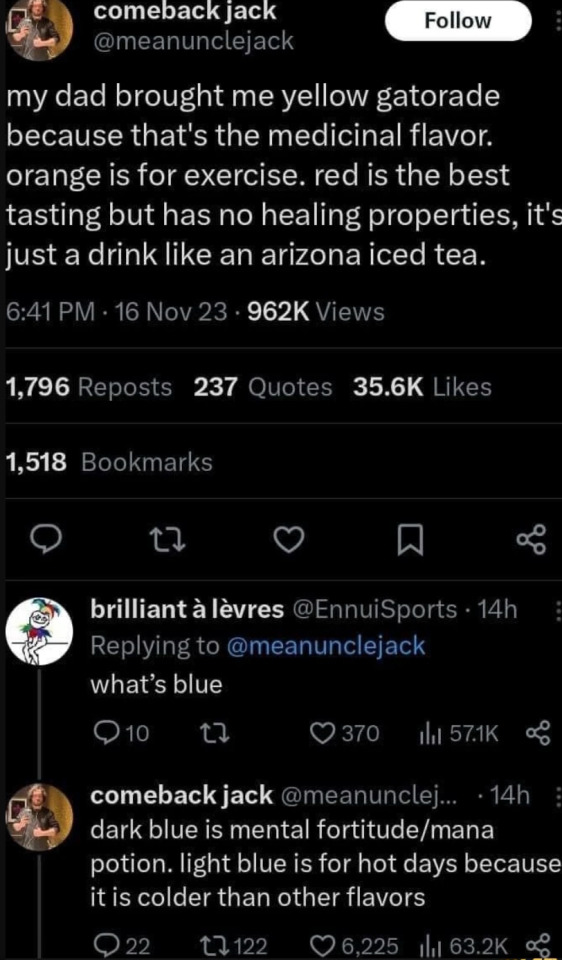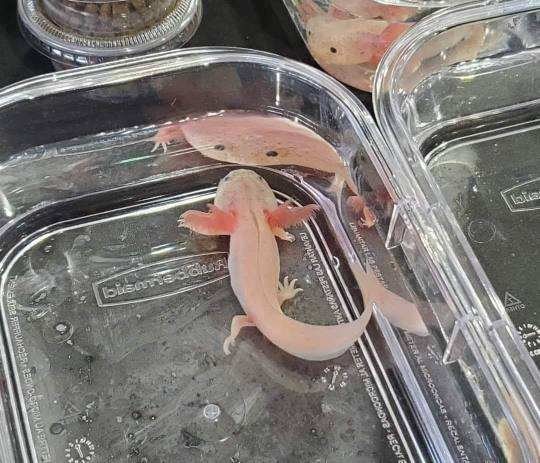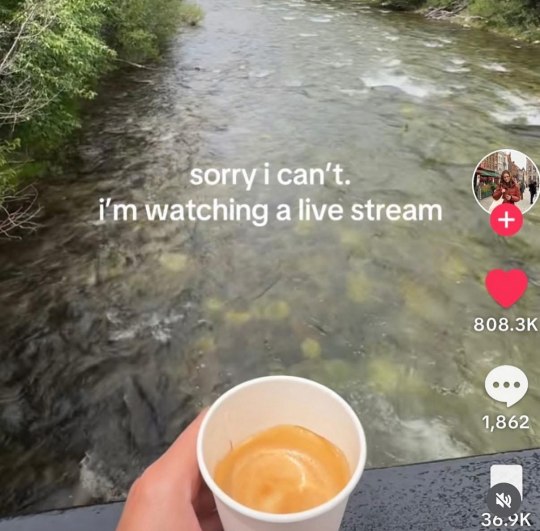Text
THIS IS IT
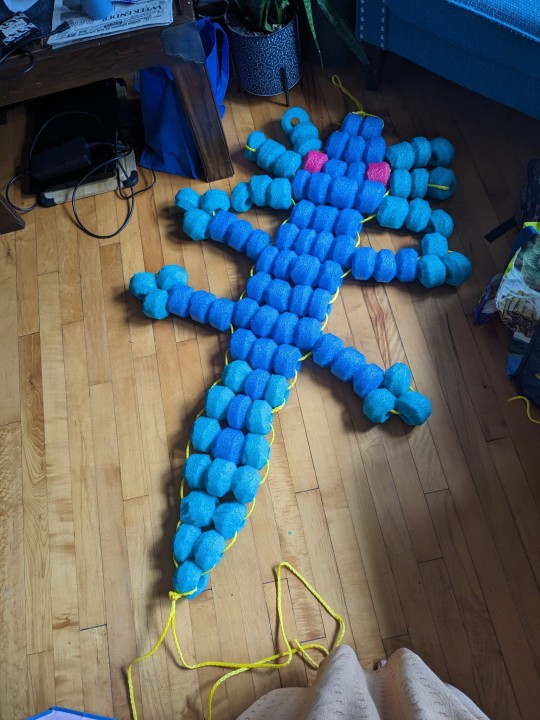
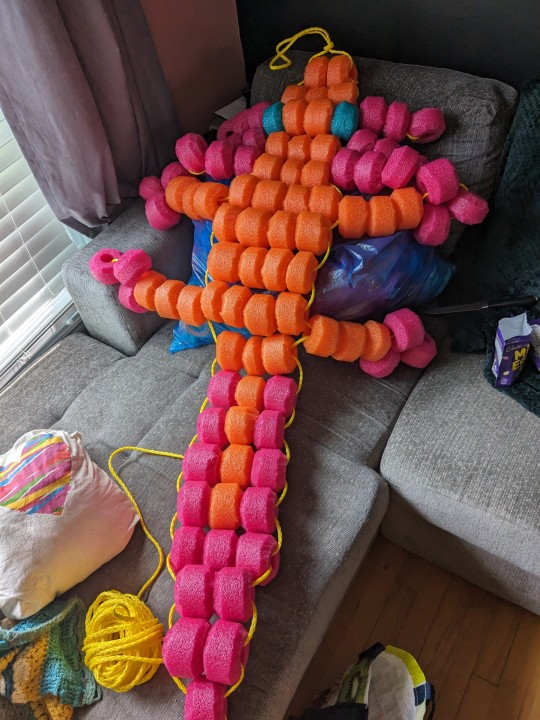
MY MAGNUM OPUS
POOL NOODLE AXOLOTLS
(and yes, they are lovers)
19K notes
·
View notes
Text
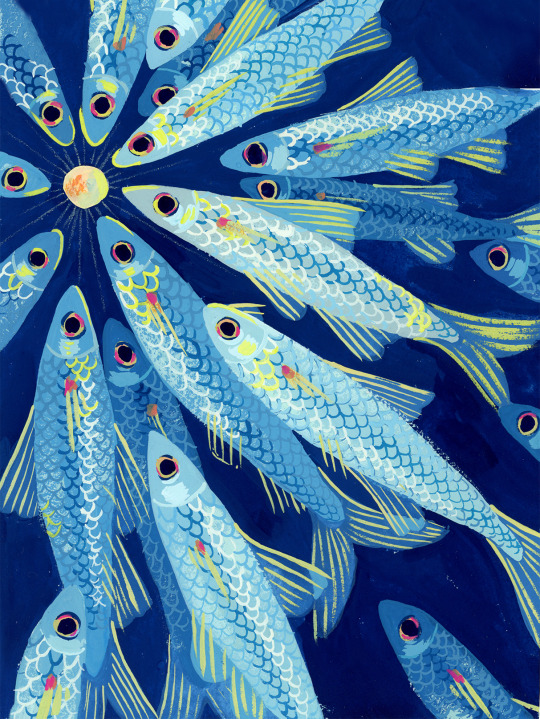
🐟🐟🌕🐟🐟🐟🐟 // swallowtail shiners // gouache on hot press paper
30K notes
·
View notes
Text
SIXTEENTH-CENTURY BASQUE WHALER'S CAP
Are you from the 16th century? Are you a whaler? Are you a Basque whaler? Yeah, me neither. But would you like to look like one?
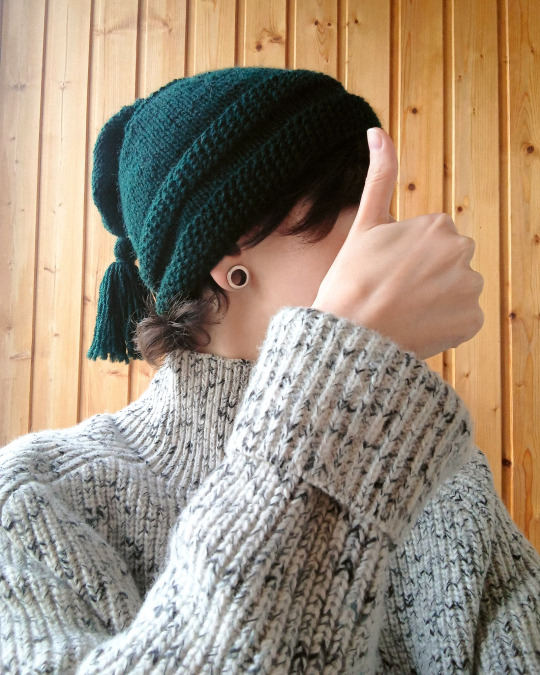
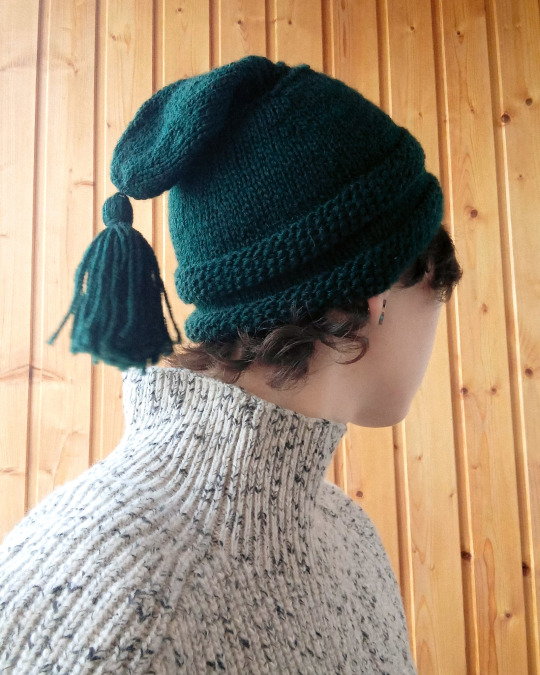
Saw this post. Thought, I want that hat. Made it. Wrote the pattern. Bon appetit.
PATTERN ↓
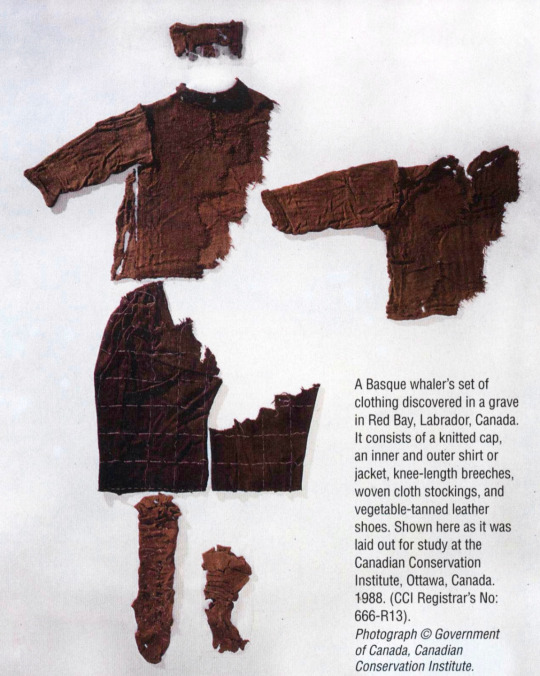
From 1530 until the early 1600s, Basque whalers annually crossed the Atlantic Ocean to Canada. During the ice-free months of June to January, scores of workers established a semi-permanent station dedicated to processing the harvest on the shore of the Strait of Belle Isle, a narrow channel on the whales' migratory route between Newfoundland and the mainland of Labrador.
In the winter of 1577, the sea ice set early, trapping ships. Unable to return to their homeland in northern Spain and southern France with a full hold of processed whale oil, many were forced to stay in Labrador, where they died of exposure and scurvy.
In the 1970s, the site was rediscovered. More than 62 graves and the remains of 140 whalers were found in the cemetery. Some of the graves contained textile fragments.
(Piecework Magazine, Jan/Feb 2014)
NOTES I am still a beginner knitter. I started this hat without a plan, I just looked at the pictures and tried to make something that looked kind of similar. Used a ball of mystery yarn from my nan. And it turned out great! And then I blocked it. And it was too big (the guy who never knits swatches finally got bit in the arse, who would've thought). My tension is okay-ish but on the tighter side, so if your head is bigger than mine, you'll be grand. Also, I've never written a pattern before, so I hope it makes some sense.
YOU WILL NEED
≈ 80g of DK weight yarn
A set of 4mm (US 6) double-pointed needless
Darning needle
A piece of cardboard (or something else to wrap the yarn around to make a tassel)
Scissors
SIZE ↕ 31cm (12”) (without the tassel) and ↔ 25cm (9.5”) (my head is 55cm (21.5”), and it fits quite well, but it could stretch a bit more and still look good)
DIRECTIONS
SEED STITCH STRIPES
Cast on 84 stitches and join in the round
Work in seed stitch for 11 rounds (round 1: *K1, P1*; staring with round 2 you just P the knits and K the purls)
Purl 1 round
Knit 8 rounds
Purl 1 round
Work in seed stitch for 7 rounds
Purl 1 round
Continue in stocking stitch (*K*) until the hat measures 11-12cm (4.5”) from cast on edge
CROWN DECREASES AND PURL STRIPES
(It's a lot, I know. But I like the look of these better than the usual crown decreases, they're a bit less visible)
Dec#1: K5, *K2tog, K10* × 6, K2tog, K5 [77]
Knit 4 rounds
Dec #2: K5, *K2tog, K9* × 6, K2tog, K4 [70]
Knit 3 rounds
Dec #3: K4, *K2tog, K8* × 6, K2tog, K4 [63]
Knit 3 rounds
Dec #4: K4, *K2tog, K7* × 6, K2tog, K3 [56]
Purl 1 round
Knit 1 round
Dec #5: K3, *K2tog, K6* × 6, K2tog, K3 [49]
Knit 1 round
Dec #6: K3, *K2tog, K5* × 6, K2tog, K2 [42]
Purl 1 round
THE CONE (idk what to call it)
Knit 2 rounds
Work 5 rounds of *K1tbl, P1* rib (you don't have to twist the knits if you can make the 1��1 rib look neat. I can't, so…)
Continue in stocking stitch for 7-8cm (3”) (or more, depending on how floppy you want your hat to be)
Dec #1: K3, *K2tog, K5* × 5, K2tog, K2 [36]
Knit 3 rounds
Dec #2: K2, *K2tog, K4* × 5, K2tog, K2 [30]
Knit 2 rounds
Dec #3: K3, *K2tog, K3* × 5, K2tog, K1 [24]
Knit 2 rounds
Dec #4: K1, *K2tog, K2* × 5, K2tog, K1 [18]
Knit 1 round
Dec #5: *K2tog* [9]
Cut yarn and thread it through the remaining 9 stitches, pull tightly (I usually do it twice), secure on the wrong side
TASSEL
Make a tassel (I used a paint brush case instead of a piece of cardboard and wrapped yarn around it 45 times)
Attach it to the hat
FINISHING
Weave in all ends
Block the hat
CONGRATULATIONS
You can go whaling reread Moby-Dick and rewatch The North Water in style!
339 notes
·
View notes
Text
#MonotremeMonday :

Kordelia Zansui Chi (Australian, b. 1967)
Echidna, 1996
hand-colored linocut, 15 x 15 cm
75 notes
·
View notes
Text
"New Yorkers bite more people than sharks annually" is an excellent example of how statistics can be misleading. Like yeah no shit, do you have any idea how rare it is to even encounter a shark in the wild? They're not exactly urban animals. I'm pretty damn sure that if sharks were living in big cities like pigeons, just strolling down the streets looking for food scraps, you'd see a lot more news stories about New Yorkers biting them.
55K notes
·
View notes
Text
For #GuineaPigAppreciationDay, here are two Chimú polychrome effigy vessels in the form of guinea pigs, North Coast Peru, 1100-1400 CE, now in the Museo de América Madrid collection. Both feature split-color black and white faces so there are three views of each.
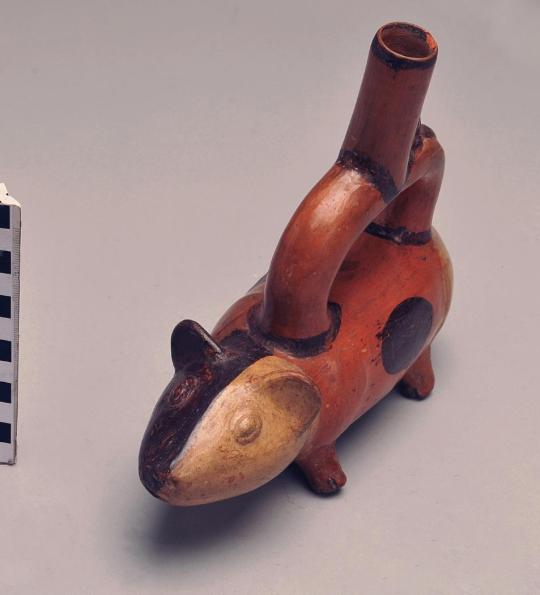
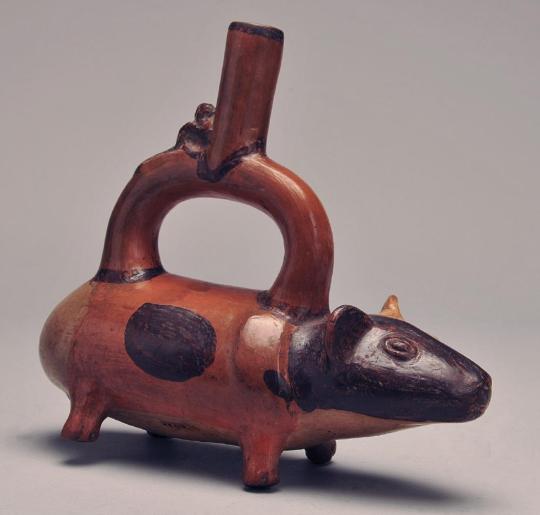
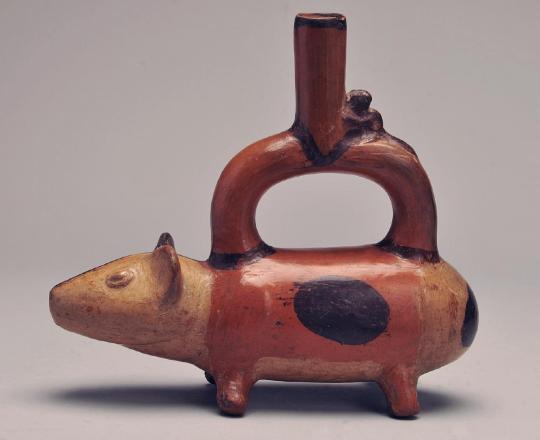
Inv. 10217 (3 views)
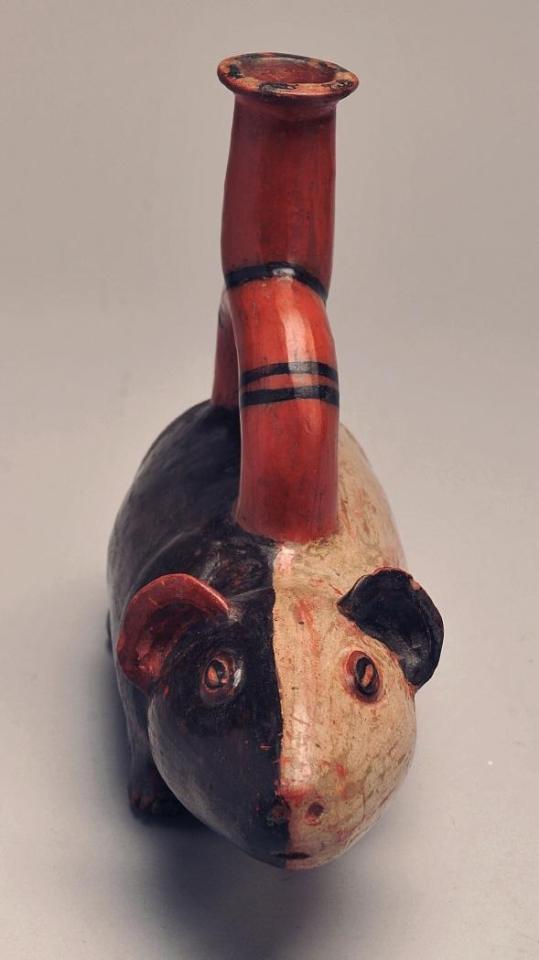
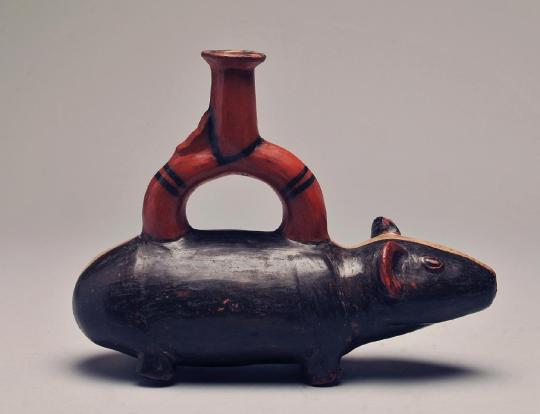

Inv. 10297 (3 views)
755 notes
·
View notes
Photo

Jupiter in Ultraviolet from Hubble
Credits: NASA, ESA, Hubble, License, Judy Schmidt
3K notes
·
View notes
Text





Last year I finally had an excuse to illustrate this simple little Tumblr story by @bees-with-swords I've had bookmarked forever for class.
I hope you like it :]
Image ID under the cut
[id: a series of five watercolor and guache paintings with digital text added to each one. the paintings depict the conversation between the whale, the tuna, and the salmon from the story in the post.
the first painting shows a humpback whale swimming with a bluefin tuna as they talk, with a skeleton of a whale in a small panel above them. the skeleton is labeled to note the skull, ribcage, spine, pelvis, and other major structures. "Do you ever dream of land?" the whale asks the tuna. "No." says the tuna, "Do you?" "I have never seen it." says the whale, "but deep in my body, I remember it." "Why do you care," says the tuna, "if you will never see it?"
the second painting shows the humpback and the tuna from a different angle, the faint impression of trees surrounding them in the water. the humpback has a series of skeletons extending behind it, each showing a progressively older evolutionary ancestor and showing the change from land animal to ocean animal. it also notes the whale's own small but still present pelvis and femur bones. "There are bones in my body built to walk through the forests and the mountains." says the whale. "They will disappear." says the tuna. "One day, your body will forget the forests and the mountains."
the third painting shows a whale skeleton at the bottom of the ocean being picked at by scavengers. a small panel below the skeleton shows the salmon joining the conversation. "Maybe I don't want to forget," says the whale. "The forests were once my home." "I have seen the forests." whispers the salmon, almost to itself.
the fourth painting shows the progression of a salmon growing from egg to adulthood as it swims downstream, with panels showing the eye of the whale and the salmon looking at one another. "Tell me what you have seen," says the whale. "The forests spawned me." says the salmon. "They sent me to the ocean to grow. When I am fat with the bounty of the ocean, I will bring it home."
the fifth and final painting shows the whale, the tuna, and the salmon from below, backlit by filtering sunlight and surrounded by other silhouettes of fish. in the foreground are tiny, microscopic plants labeled "proterocladus antiquus, oldest land plant ancestor, alive one billion years ago." "Why would the forests seek the bounty of the oceans?" asks the whale. "They have bounty of their own." "You forget," says the salmon, "That the oceans were once their home."
/end id.]
(Thank you @saffronlesbian for the beautifully descriptive id)
961 notes
·
View notes
Text
This scientist crafts stunning visual art through chemistry.
44K notes
·
View notes
Text
Rule 1 of guinea pig: If it is dark, go there
Rule 2 of guinea pig: Food
Rule 3 of guinea pig: Scream about everything
274 notes
·
View notes
Text
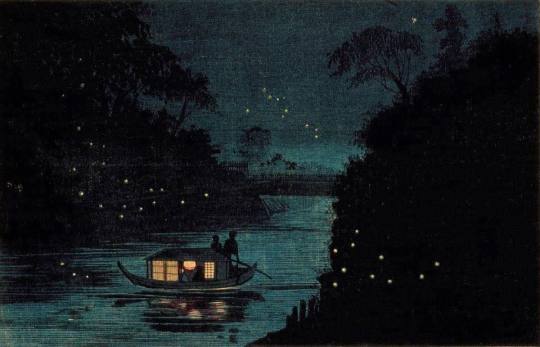
'Fireflies at Ochanomizu' by Kobayashi Kiyochika , 1880
5K notes
·
View notes
Text

Wave in Backlight - Peter Witt
German , b. 1966 -
Oil on canvas, 80 x 80 cm.
45K notes
·
View notes
Text
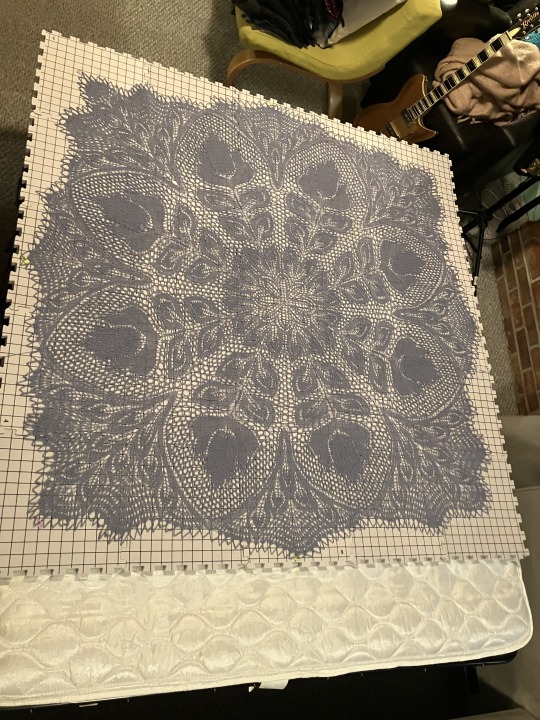
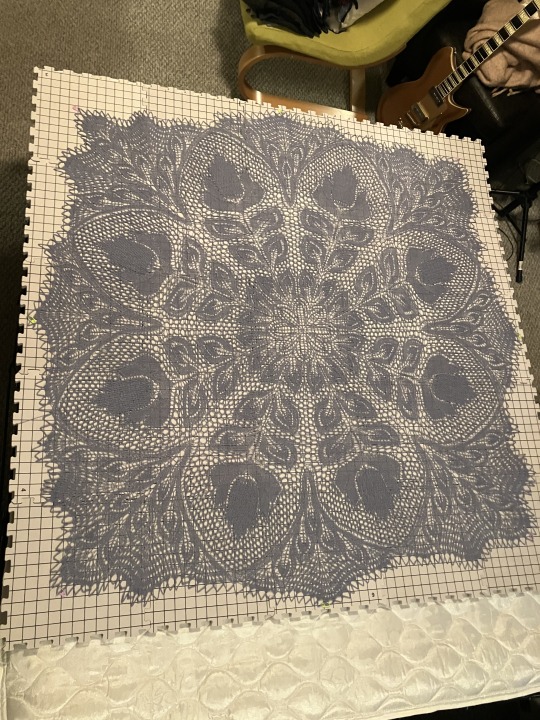

Pics of what I’ve been working on for the last month! Pattern is Lyra by Herbert Niebling. Originally a tablecloth, this will see use as a throw blanket.
1K notes
·
View notes
Note
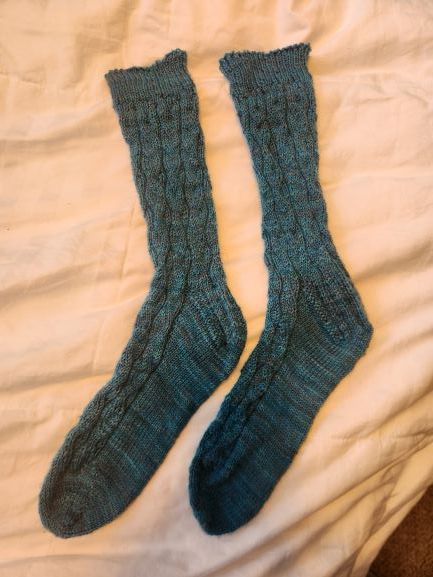
I finished the second sock last night! Thank you for the impetus to get it out of the way!
I've been working on knitting a pair of socks for my mom, that were supposed to be for Christmas, then for her birthday, then for Mothers Day in May. I currently have 1.5 socks. I need to make these socks go away. So I'm going to say I'll get that sock leg that's waiting done in the next 30 days for an egg for Killie. I learned some different increase stitches from this, and tried out a different heel technique, so it's been useful for acquiring new knitting knowledge, but I need to get away from these stabby stabbly thin needles.
Thank you very much!
Socks! Well, sock, but, still. @isuarock, how'd it go?
What is this blog? | Submit to get Killie another egg
102 notes
·
View notes
